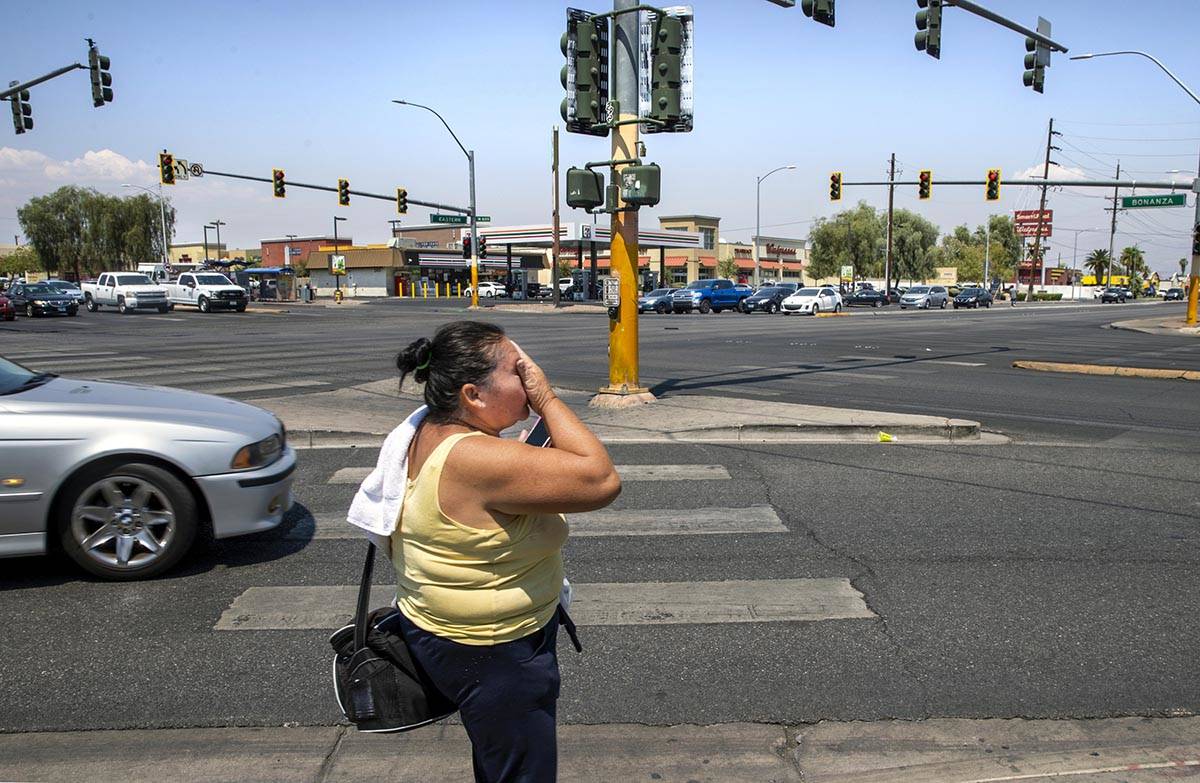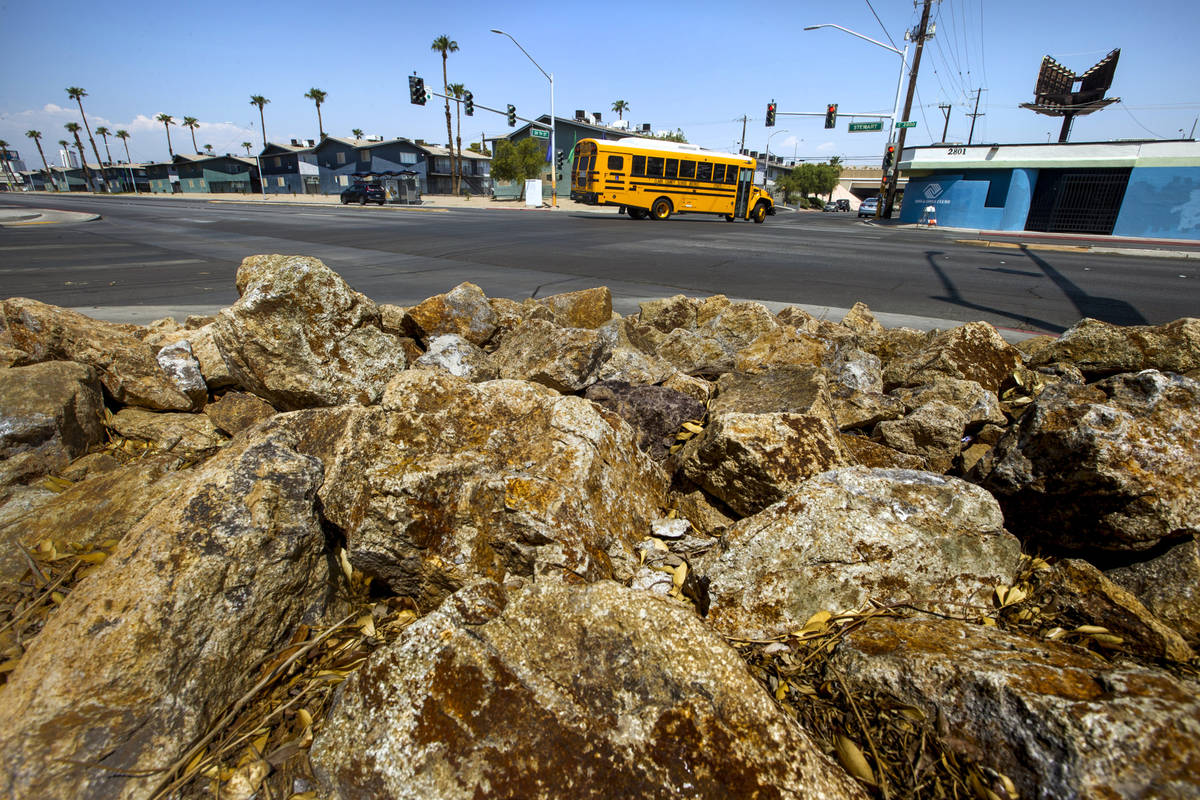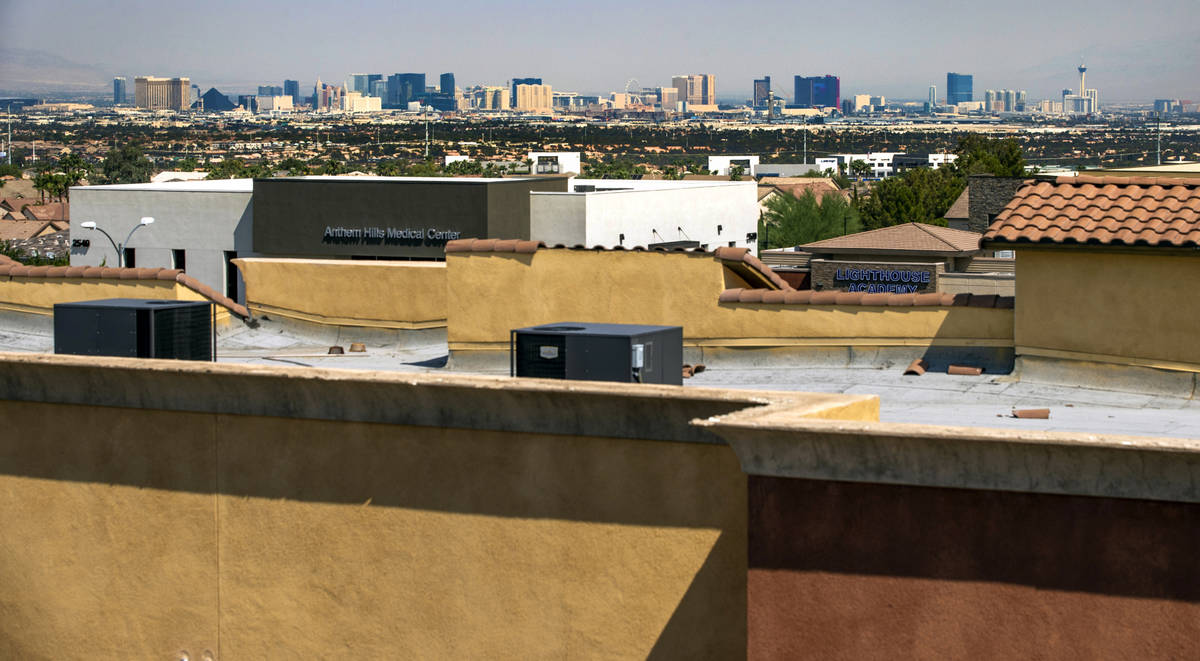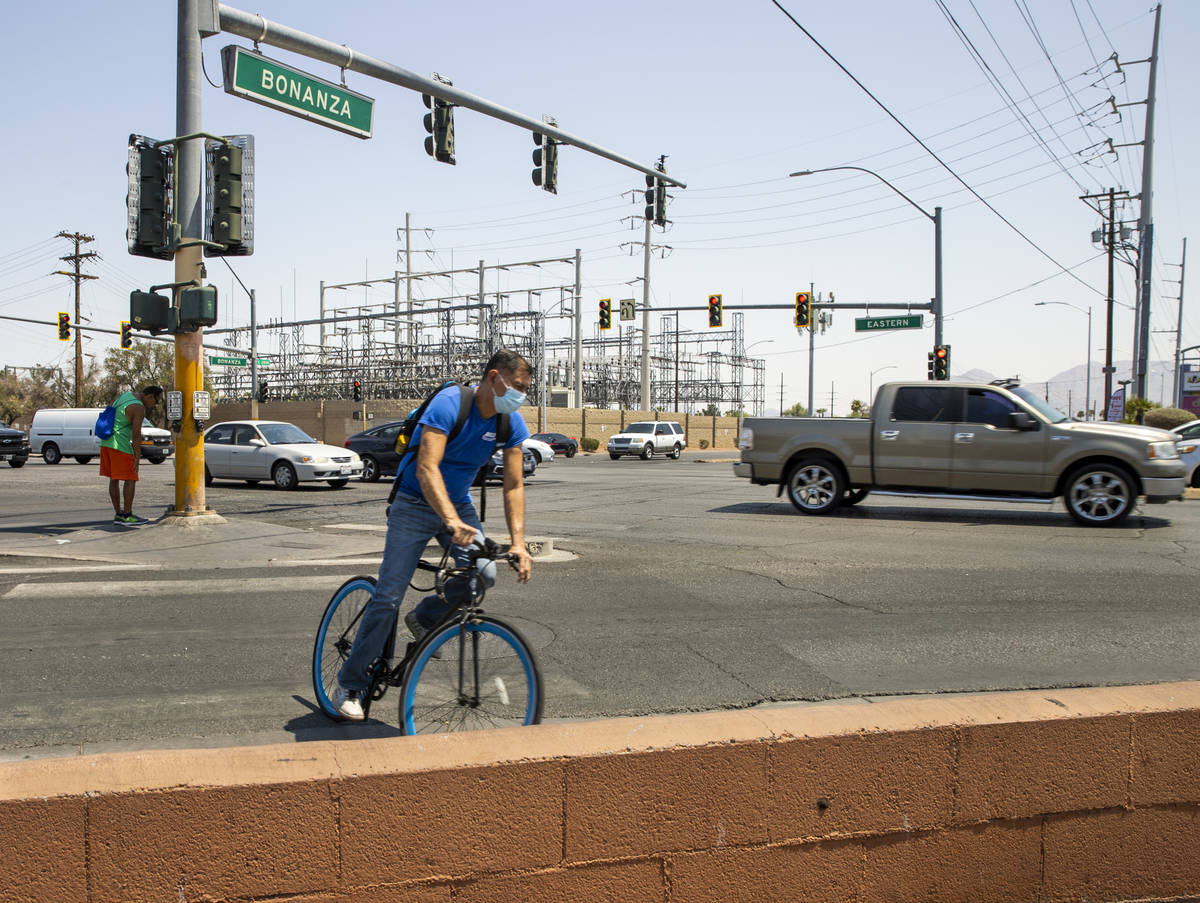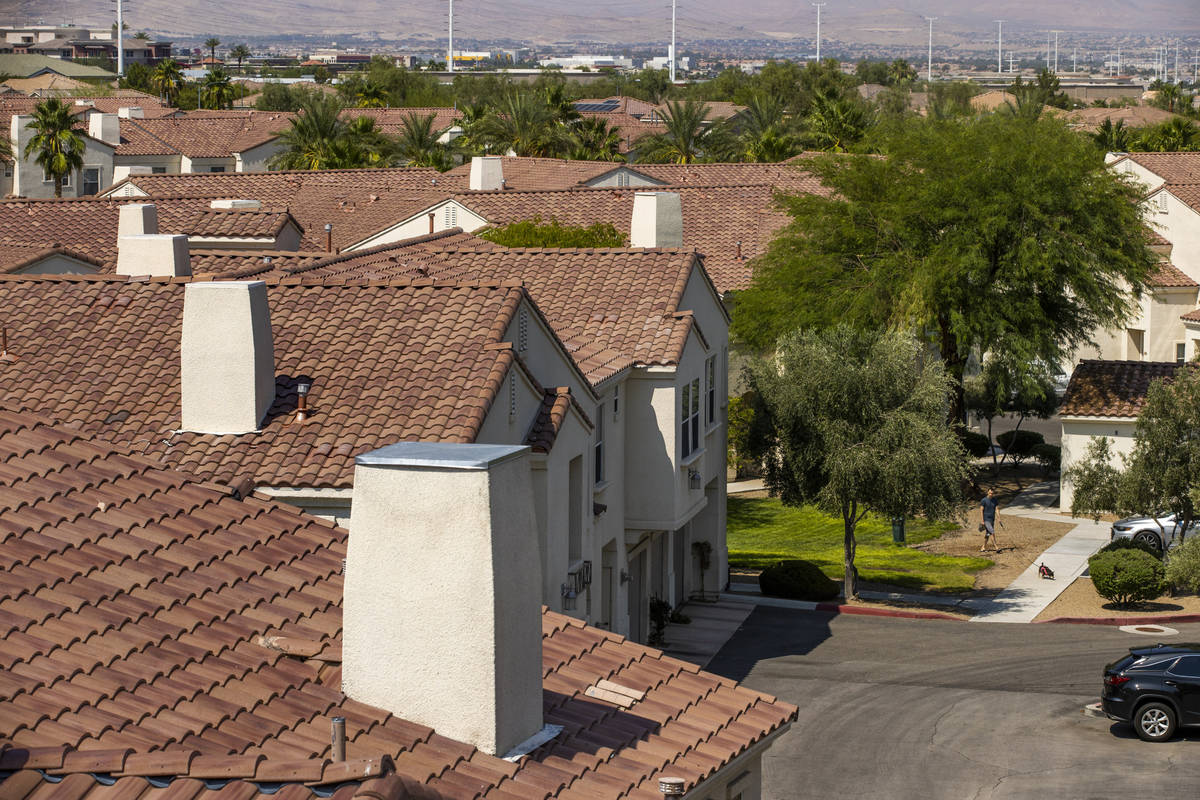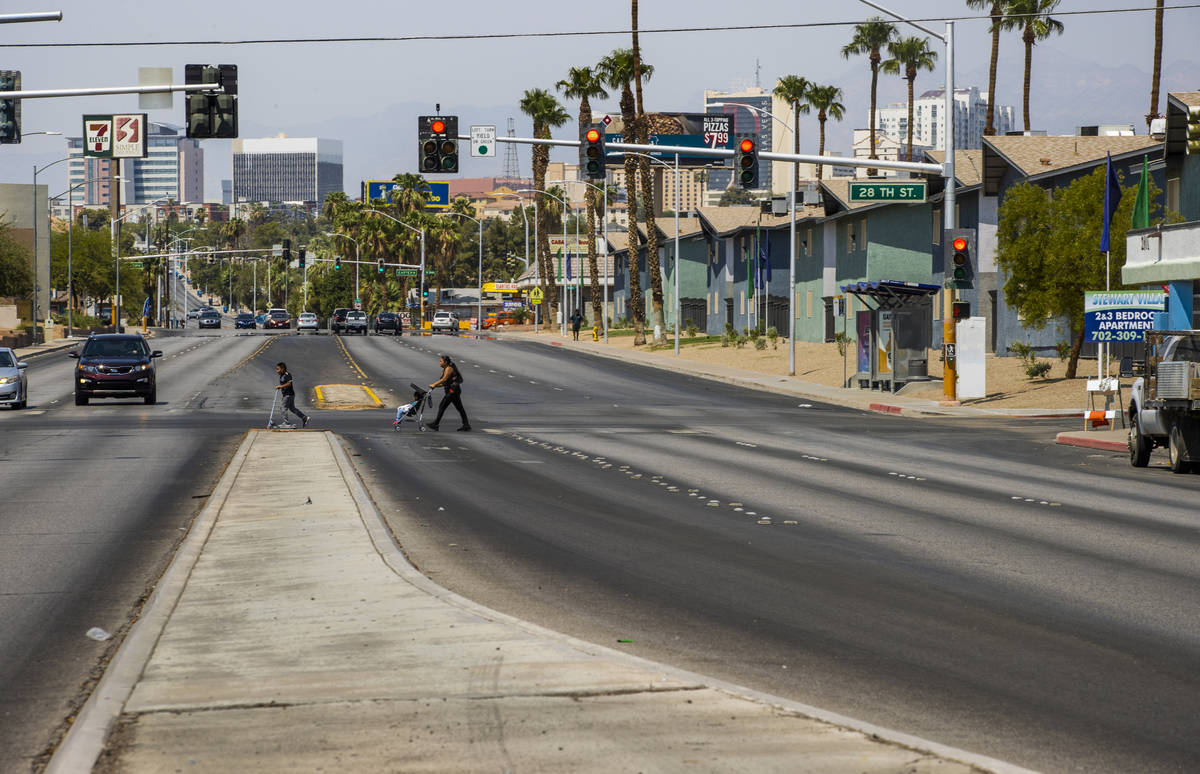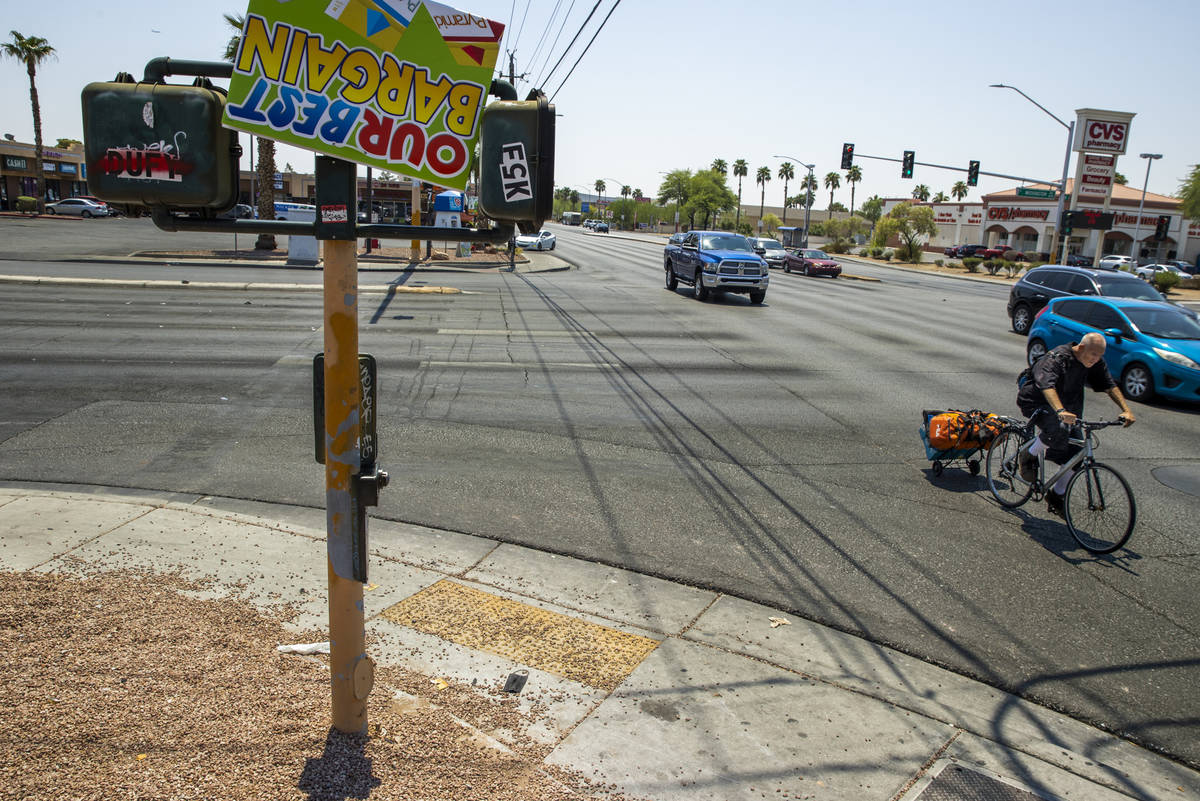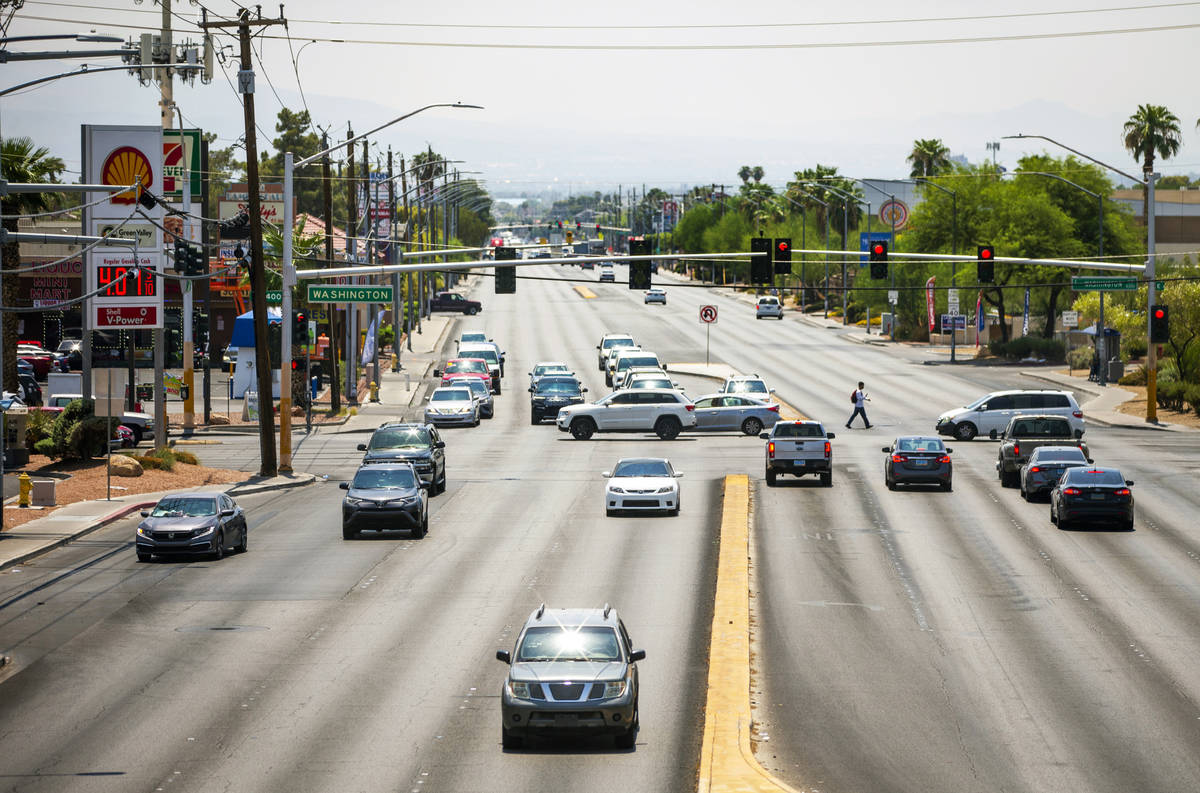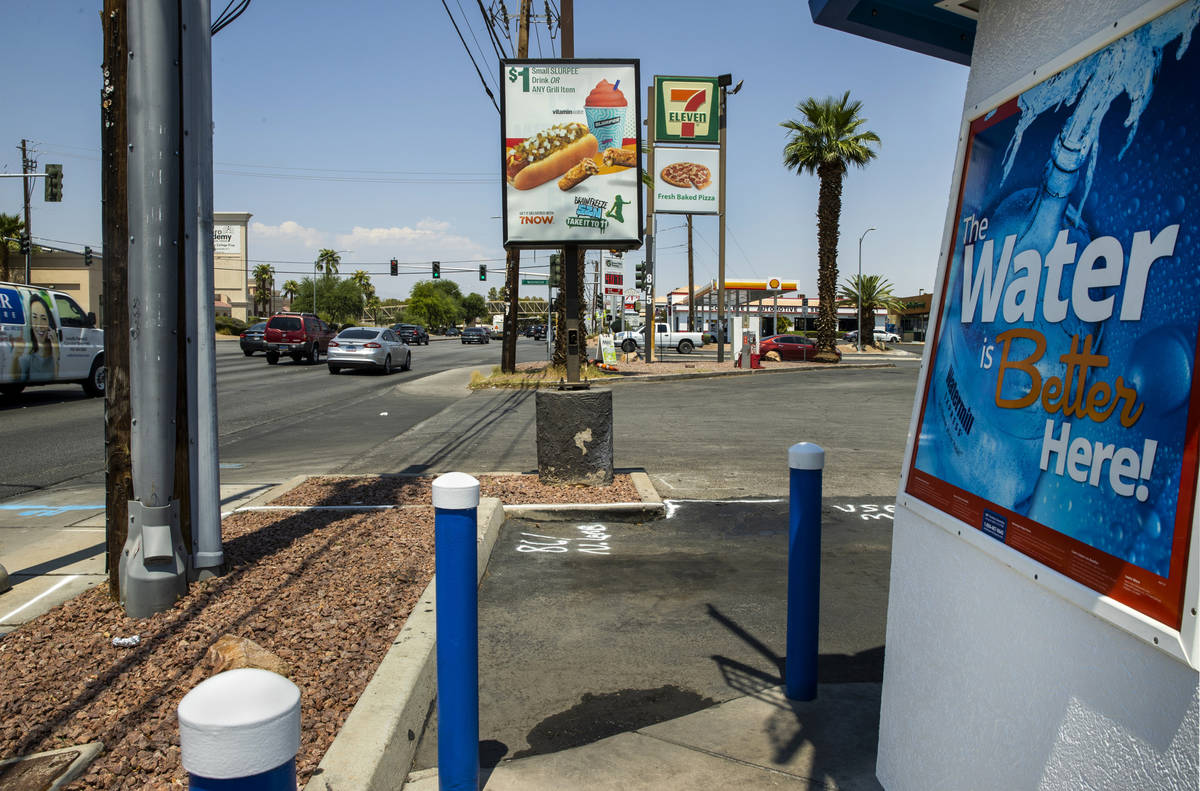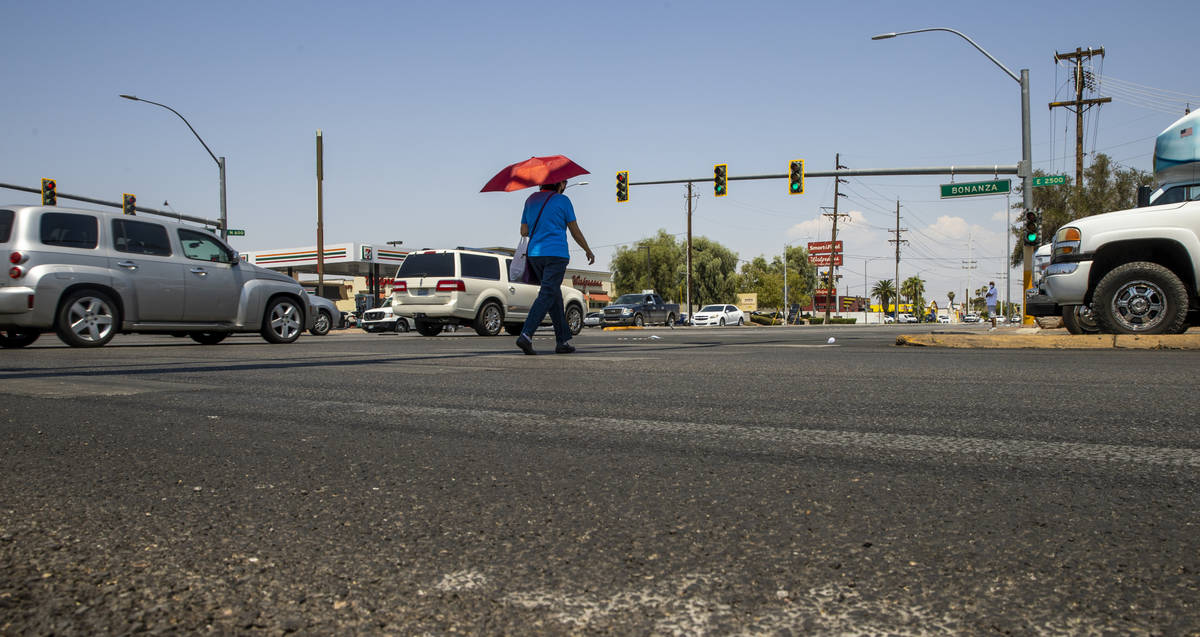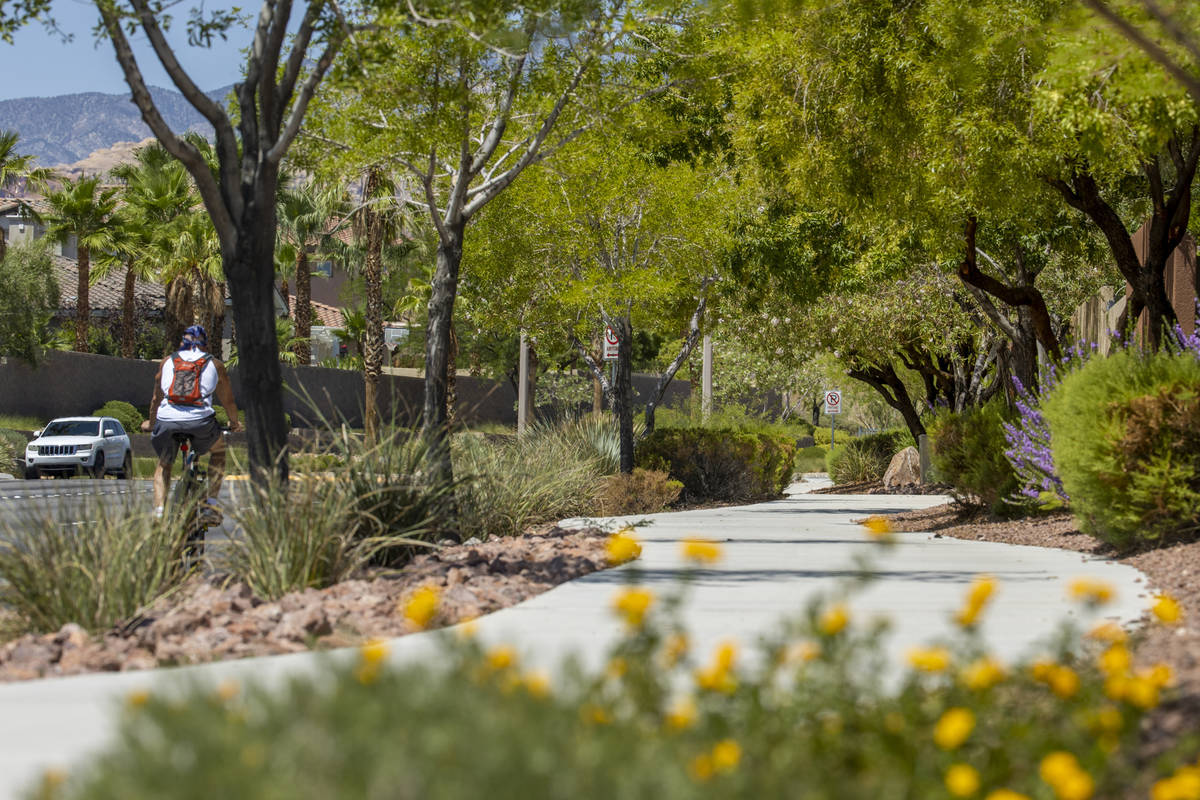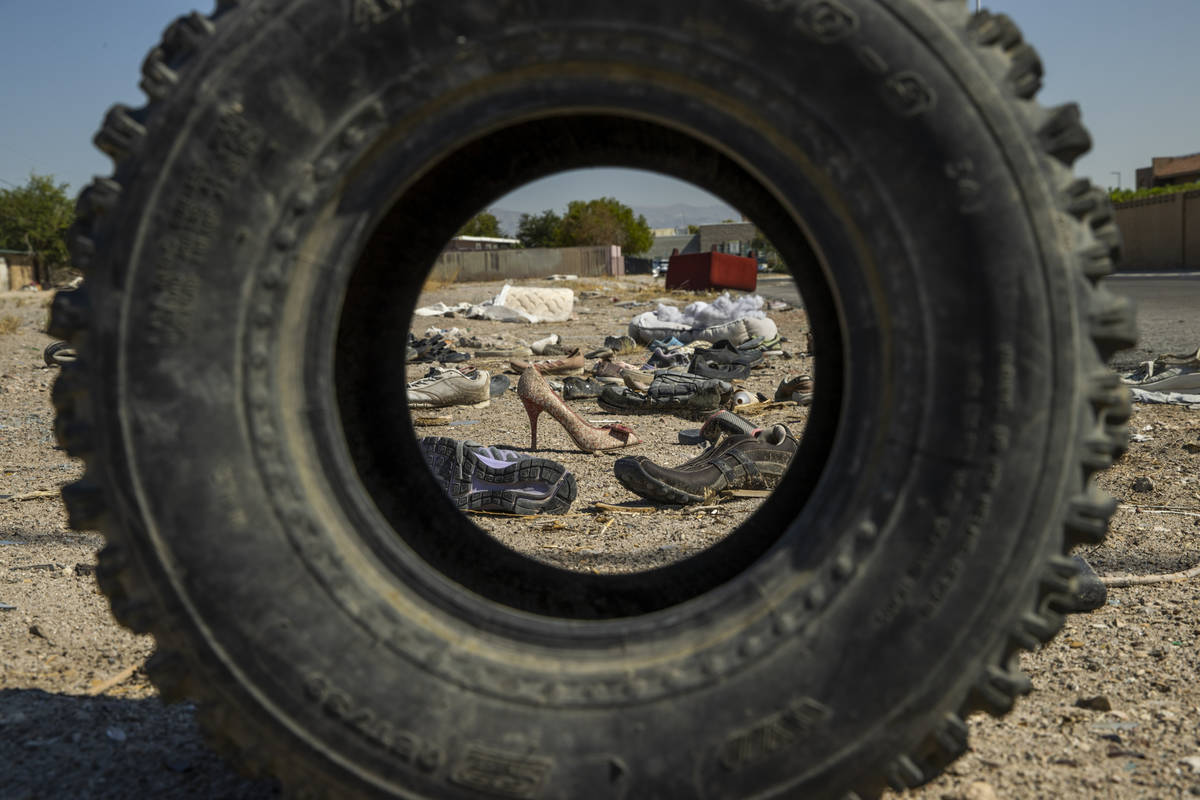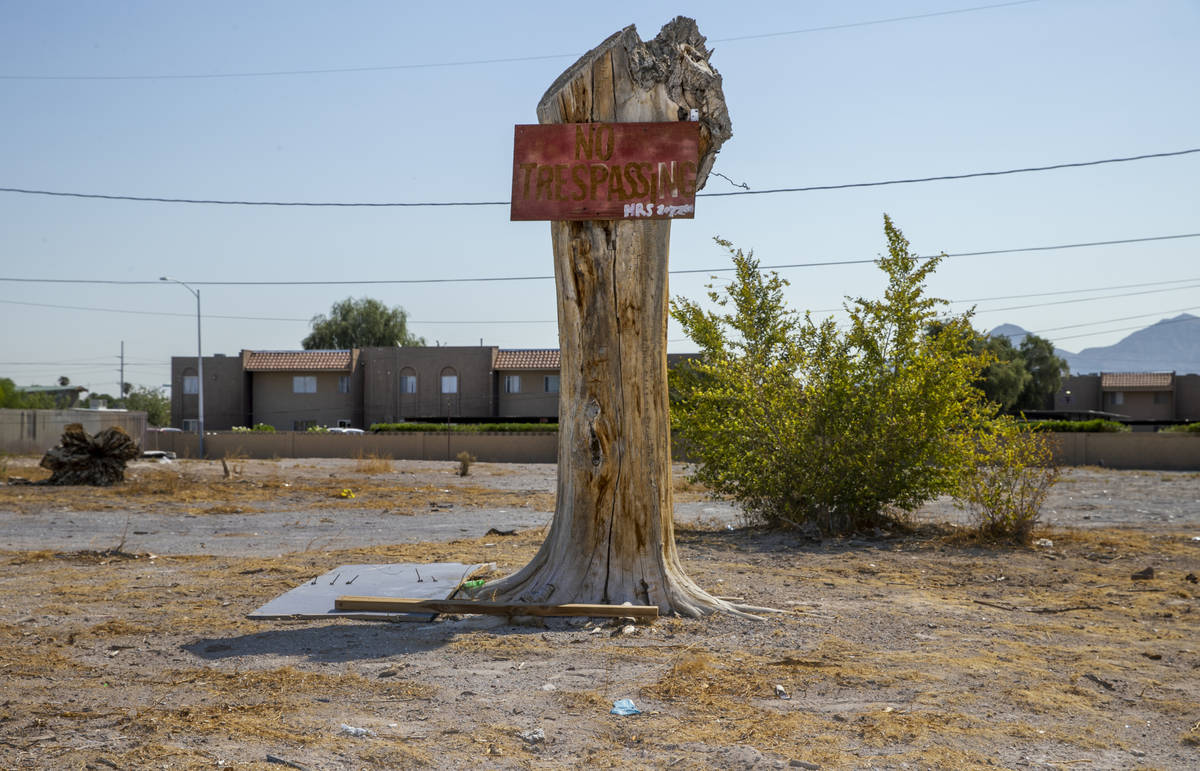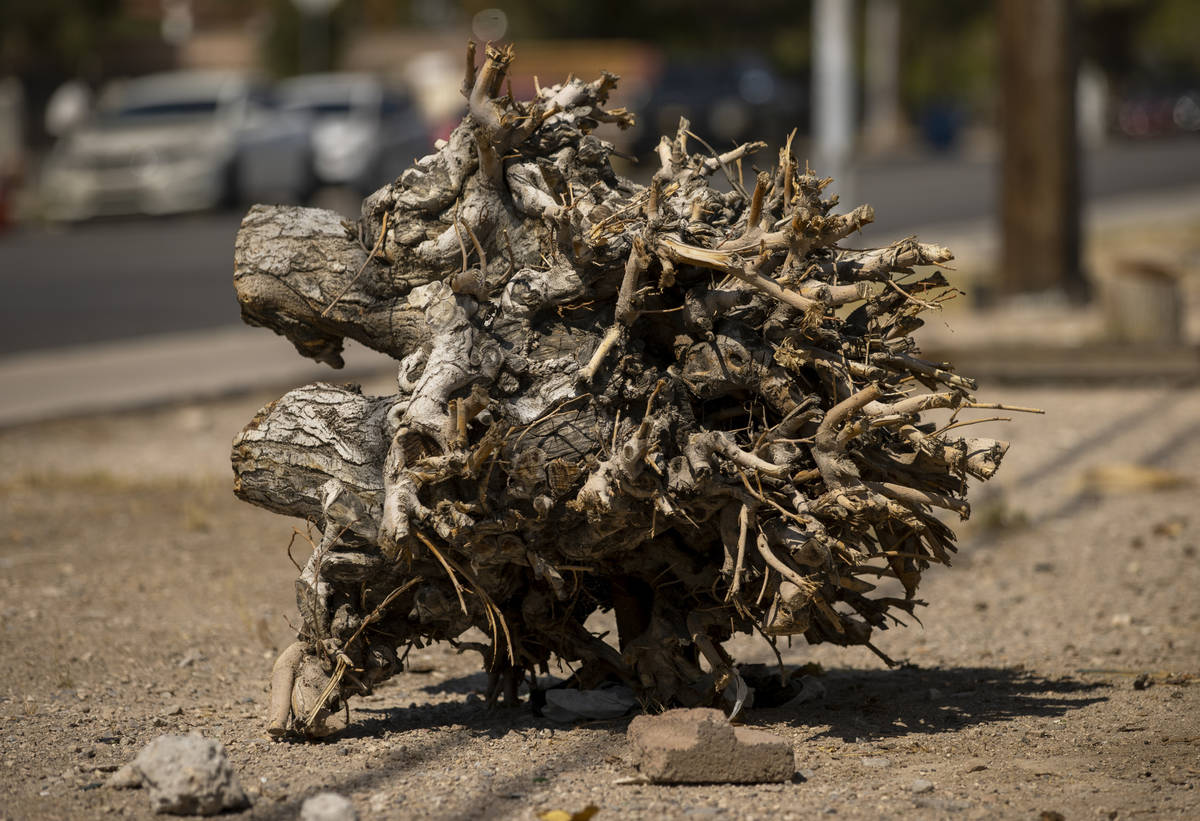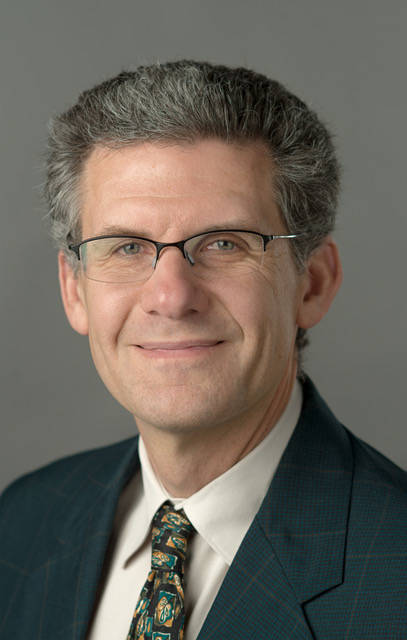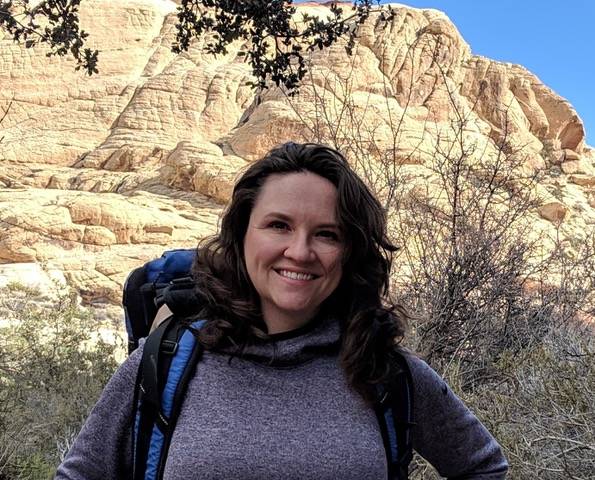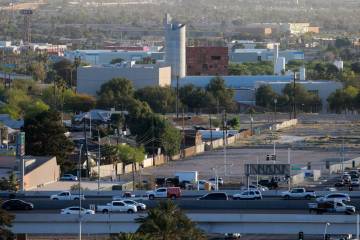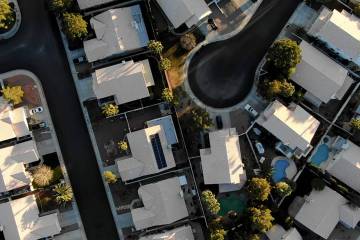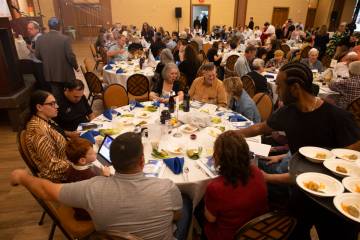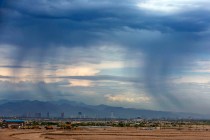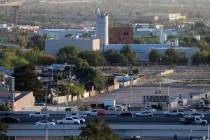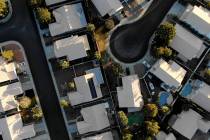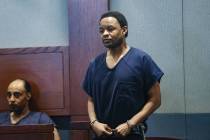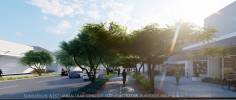More trees may help east Las Vegas cool down from urban heat islands
When the Las Vegas Valley experiences blazing hot summer temperatures, one community in particular — east Las Vegas — swelters more than other neighborhoods because of urban heat island effects.
Heat is trapped in concrete and asphalt during the day and then slowly releases into the atmosphere at night, raising the overall surface temperature 1 to 7 degrees higher than temperatures in outlying areas. The phenomenon can exacerbate the duration and intensity of heat waves passing over arid cities, increase heat-related illnesses, decrease air quality and harm worker’s health and productivity, especially in low-income areas.
East Las Vegas residents are predominately affected because there is significantly lower tree canopy and older buildings that can’t regulate heat well, according to a new study.
UNLV students, under the guidance of assistant research professor Derek Kauneckis at the Desert Research Institute, are working with Las Vegas city planners to develop a long-term strategy to mitigate its effect by planting close to 60,000 trees across the city by 2050.
“This is very much an environmental justice concern for a number of reasons,” Kauneckis said. “The highest concentration of urban heat island effects is in east Las Vegas, which is a predominantly Latinx community. There’s a much smaller amount of tree cover in that area as well. So they’re using the scientific information to help better design the city for dealing with these extreme heat events.”
Extreme heat can result in illness or death, in some cases. Studies have shown heat islands can raise health risks for those with COPD, asthma and heart disease, according to the students’ Urban Forestry Project report.
In 2018, there were 130 heat-related deaths among Clark County residents, 78 in 2019 and 82 in 2020, according to Christi Kindel, associate general counsel of the Southern Nevada Health District.
With temperatures rising an average of 5.76 degrees since 1970, Las Vegas is the fastest-warming city in the U.S. according to 2019 Climate Central research.
So how are scientists, academics, and city planning working towards making the city resilient to future heat events?
East Las Vegas heat
A 30-meter raster map of Urban Heat Island for the U.S. Cities was collected from the Trust for Public Land website and used to measure heat in east Las Vegas. The original data is derived from 10 ground-level thermal sensors from the summers of 2018 and 2019, revealing 14 hot spots where temperatures exceeded the mean temperature for the city.
For instance, when looking at tree canopy coverage, a hot spot identified around East Bonanza Road and North Eastern Avenue shows between 2 to 6 percent tree coverage, whereas the Summerlin area has tree coverage averaging between 10 to 20 percent.
Most of the hot spots are in nonresidential areas or a mix of residential with nonresidential.
Commercial buildings, industrial sites, commercial rooftops and materials used for street paving have higher thermal capacities than what is seen in residential areas.
“City planning knows that there are portions of the Las Vegas community that are unfairly burdened by just by virtue of living in neighborhoods with older homes, or having lower incomes and not being able to afford an electrical bill of $450 in the middle of summer, or whose occupations put them at risk because they work outdoors,” said Ariel Choinard, a doctoral student in School of Public Policy and Leadership, who was a part of the UNLV project.
Based on 2020 census data, 25 percent of east Las Vegas residents report being born in another country. Over 60 percent of individuals within the community speak English, 27 percent identify as Latinx, 10 percent identify as Asian, and 6 percent speak Tagalog as their primary language. Fifteen percent of people experience poverty, and the median household income is around $32,000 a year, with 67 percent of residents living in rentals.
This residential makeup is vastly different compared with south Summerlin, whose average household income is $65,000 with 68 percent owning their homes and 6 percent living in poverty.
Las Vegas City Councilwoman Olivia Diaz has seen east Las Vegas grow by leaps and bounds, leading to more development.
“We just need to be mindful now moving forward that we can’t forgive projects not incorporating trees and bringing more shrubs and green greenery to their projects. We just can’t afford to do that, and I think we may have lost sight of that for a little bit,” Diaz said.
“We have a unique situation where we got to work with renters and property owners who are not necessarily living in the state, and people don’t necessarily have control over the land that they’re on as much as other parts of the city — now that right there is a challenge we’ll have to overcome,” said Michael Howe, long-range planning section manager for the Las Vegas Planning Department.
The proposal
Increased vegetation decreases surface air temperature by providing shade and cooling through transpiration. It also has economic benefits such as energy saved, CO2 sequestered, air quality improved, stormwater retained and increased property values.
Continued loss of vegetation from development adds stress on the electrical grid in east Last Vegas and increases the need for cooling centers and diversity of water supply to support an urban canopy.
“We’re having to catch up I think to the evolution of development,” Diaz said. “I think that this is a huge way to add some parity, and come back and add some beautification to our neighborhoods that are a little bit more mature, which went without this level of development that we see in other neighborhoods around the southern Nevada region.”
Because of COVID restrictions, the UNLV students were unable to engage with the community to hear concerns or opinions about planting more trees. Instead, they looked into urban forestry plans, policies, and communication strategies of 11 other arid cities to identify common problems and solutions.
The students identified four factors that present challenges to urban forestry initiatives:
■ Community adoption: The perception that planting more trees in a neighborhood will increase crime or invites gentrification and displacement.
■ Urban forest disservice: If the community is incentivized to plant its own trees, will the city help in maintaining the trees?
■ Treetop trade-offs: More drought-adapted trees require less water but provide no coverage compared with fuller trees, such as mesquites, which will require water frequently
■ Neighborhood demographics: The majority of residents live in low-income households or in rentals.
“There are existing community narratives that need to be considered if you’re going to ask residents to plant trees. I’m not saying that’s necessarily the case in East Las Vegas, but that it has impacted tree planting initiatives in other places,” Choinard added.
Students compiled ways other arid cities engage with communities to build trust, understanding, and relationships around urban forestry, such as hosting town hall meetings in English and Spanish; holding educational tables at community, centers, farmers markets, and churches; and then incentivizing residents through grants, free trees, or utility credits.
The project was presented to the city’s Planning Department in spring 2020, and officials used it to inform goals in the 2050 Master Plan approved by the City Council on July 21.
A resilient future
A resilient city will have both the ability to withstand an exaggerated shock but also adapt to and potentially reorganize around new conditions, according to Kauneckis, who is in the Division of Earth and Ecosystem Science.
The bigger picture of the UNLV, DRI and city planning’s collaboration was to establish a co-production model among the city designers, the scientists who are working on the design and those who are going to be the recipients of those urban design and vegetation products.
Planting trees was part of a larger conversation Kauneckis held in his UNLV class centered around resilience and what communities need to live with heat.
“Yeah, because trees are great. And it gets damn hot in Las Vegas. But trees are also a medium- to long-term solution to urban heat. And folks in that community may need and want other types of resources to help deal with the high temperatures in a much shorter term,” Choinard said.
More discussions occurred around a potential cooling corridor for public transportation.
“What would that mean? We’re talking tree-lined avenues where there are high levels of population air conditioning centers. Air conditioning bus stops? Can we incorporate urban forestry into these cooling corridors to get people to and from their work environments,” Kauneckis said.
Choinard’s biggest takeaway as a student working on the Urban Forestry Project was the focus on not separating human and ecological systems.
“Our existence on this planet in a way recognizes how dependent we are on ecosystems and sort of recognizes the actions of human systems that can produce vulnerability or inequalities that leaves some folks more vulnerable to disaster, or, say, a heat wave in Las Vegas, than others. So it’s a very big picture and holistic look at ways we can make change for the better and survive climate change,” Choinard said.
Stephanie Castillo is a 2021 Mass Media reporting fellow through the American Association for the Advancement of Science. Email her at scastillo@reviewjournal.com or follow her on Twitter @PhutureDoctors.



